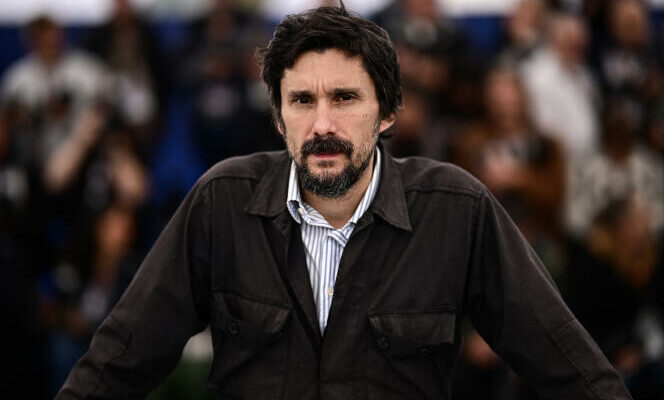It has long been easy to mistake Lisandro Alonso for a rockstar, or even the guitar hero putatively from a heavy metal band, with his long wavy black fleece, and the goatee adorning his chin. In May 2023, after ten years of absence, we found the Argentine filmmaker on the Croisette, in Cannes, to present Eureka, short hair, raked as if with a billhook. The attitude, however, had not changed, and you had to see the director rushing through the aisles of the Théâtre Debussy, hands raised towards the audience, to go on stage as if for a concert.
At 48 years old, Lisandro Alonso has established himself as one of the leading figures of Argentine auteur cinema, a free electron, unpredictable and impulsive, whose work – six feature films in twenty-two years – traces a furrow radical, metaphysical and soaring. Revealed in 2001 with Freedoma hyperrealistic portrait of a pampas lumberjack with frugal morals, his cinema has continued to metamorphose, with ethnographic dreams (Los muertos2004) on overseas trips (Liverpool2008), until culminating with the laconic neo-western Jaujaworn by Viggo Mortensen, in 2014.
Between Jauja And Eureka, in theaters on February 28, around ten years have passed. The filmmaker, reached by telephone in the middle of the Berlinale, where he is serving as a juror, explains this despite wavering communication where his voice, as in his films, seems to reach us from a strange sizzling limbo. “It initially took me three or four years to write the script, because I was in no rushhe specifies. Then another two years to gather the funding. And then the pandemic arrived, with new problems that led me to restructure the production team. We had to organize to shoot in several countries: in Portugal, Spain, Mexico and then the United States. If Eureka taught me something, it’s that I don’t want to wait so much before shooting! »
“On the side of the margins”
Eureka weaves a transcendent journey around the indigenous condition, with which Alonso’s films have never failed to be populated. “Not because I would be a “native” filmmaker qualified to represent them, but because I have always filmed on the margins, in nature, along the rivers where the natives have lived, sometimes for almost four hundred years.. » The ambition of the film is considerable: to capture something of this condition by sailing through space and time, along the American continent. “The main “seed” is taken from the novel Blood meridianby Cormac McCarthy [1985]Alonso enlightens us. I drew from it this kind of chaotic poetry based on dimensional jumps, nonsense and mystical feeling. This is whereEureka takes its form, but I also wanted the film to have a reflective angle. »
You have 58.91% of this article left to read. The rest is reserved for subscribers.
